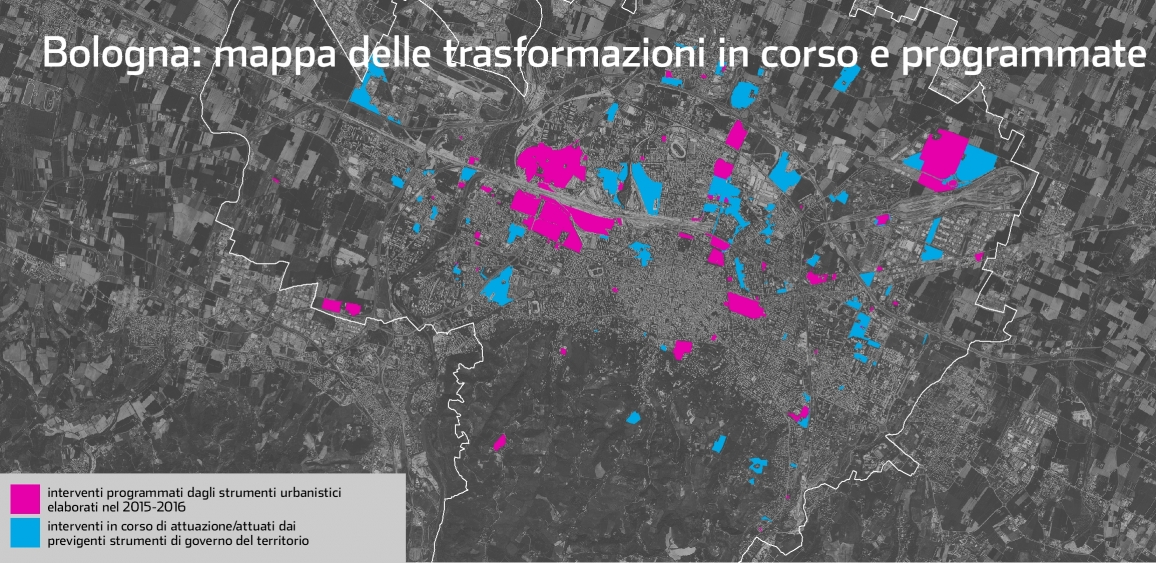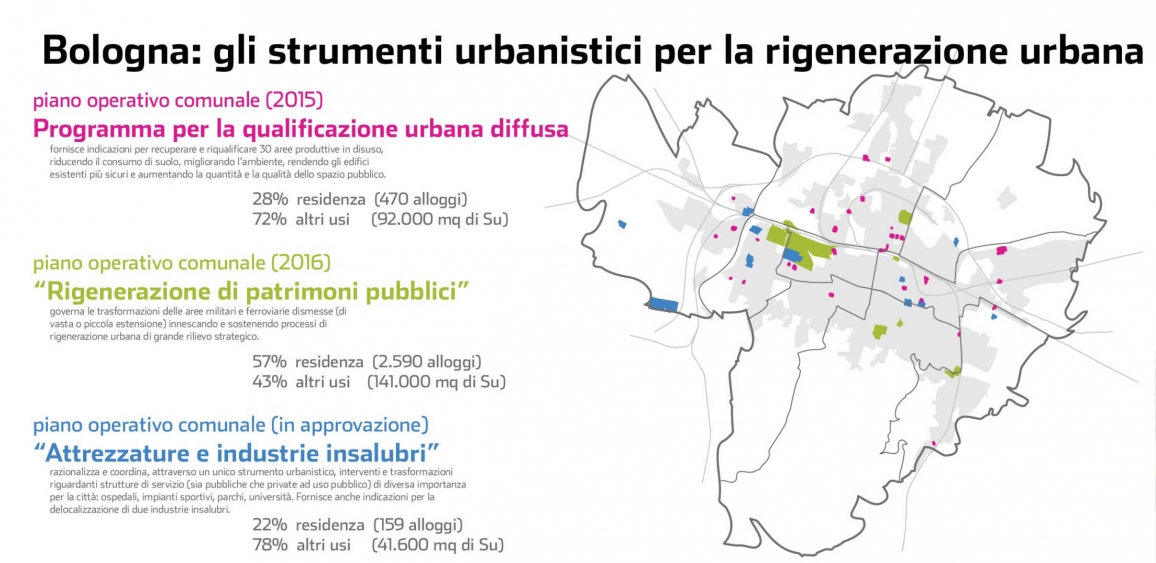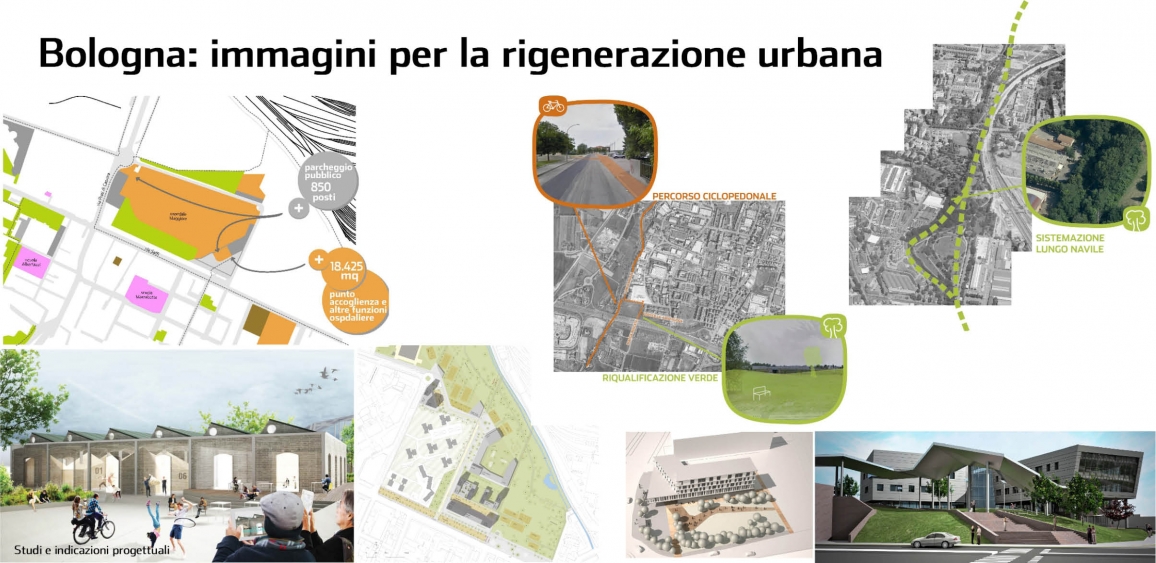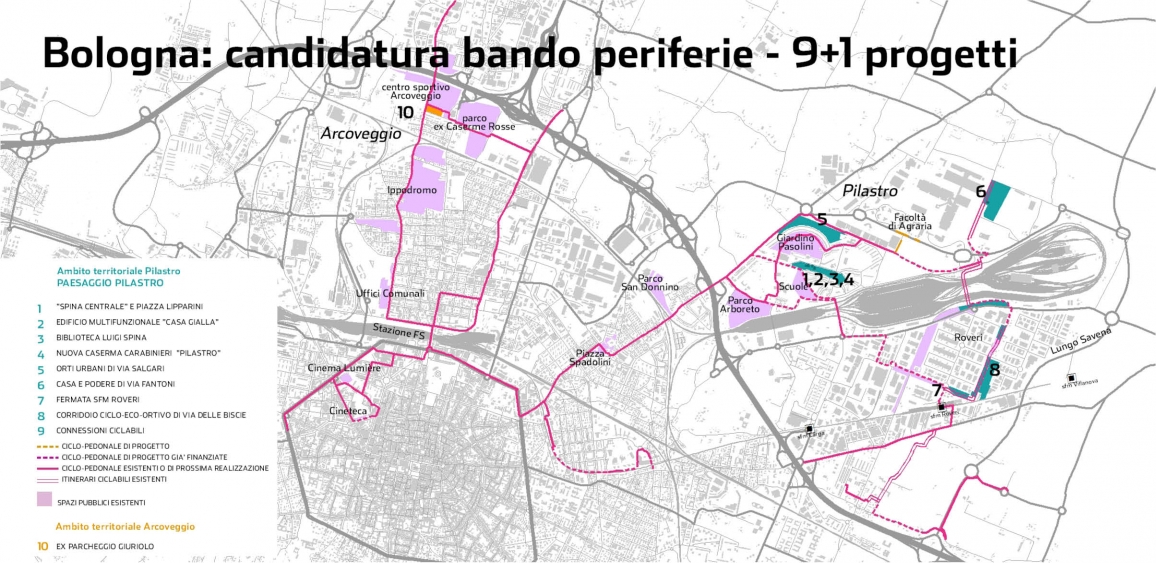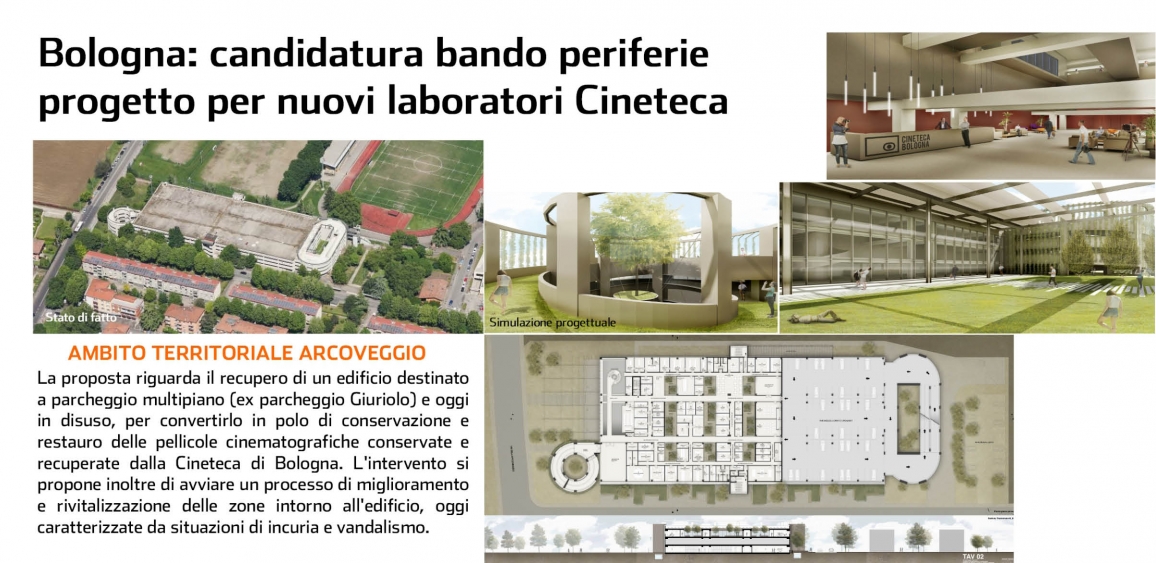Bologna is a growing city, which both stable and temporary population are growing, the economy is in slow recover and new important infrastructures are on the way to realization (new AV station, People Mover to connect station-airport under construction, new urban trolley bus lines, highway and main roads enlargement under project).
The urban strategies that are following the growth of Bologna are pushing on the regeneration and re-functioning for areas, public spaces and existing buildings, mostly located out of the city center, that need to be adapted to new uses and functions.
On the North there are two main areas of transformation: the Mercato Navile, where a new office district with housings is growing, also with public services in the 30 hectares of surface of the old fruit and vegetable market. The other area is the Lazzaretto, an area of 73 hectares on the back of the Ospedale Maggiore, that is served by the future stop of the People Mover, in which there are housing under realization, new buildings for the university and some retail and services activities.
New urban plans are involving, on different areas around the surface of the Municipality, several private plots (mainly brownfield sites not in use anymore), and public buildings not in use (public real estate and state owned areas, old barracks and railway spaces) that are able to be the trigger for big transformation, which can be useful for the entire city.
The complex project for the Pilastro (the big housing district in the Northeast side of the city, now really degraded both for the physical and social point of view) is an important tile of this mosaic, and it is candidate, together with the project to reuse an old parking area as a new site for the Cineteca of Bologna (film library), for the National competition for the requalification of suburbs.
Italiano
